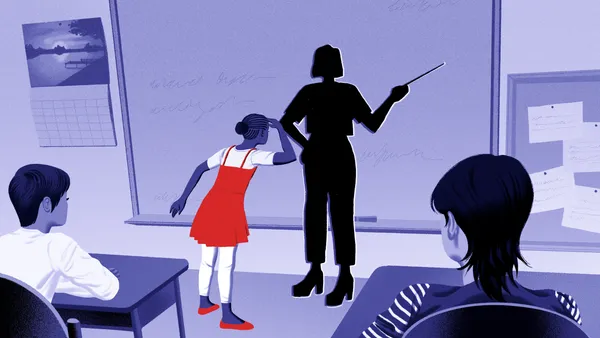Dive Brief:
- Highlighting the need to improve school infrastructure with climate-friendly additions in mind, the White House held its first-ever Summit for Sustainable and Healthy K-12 School Buildings and Grounds on Friday.
- The summit’s panelists and speakers discussed the urgent need to address aging school buildings, especially as climate change continues to harm school communities and disrupt learning.
- The summit also focused on ways districts can tap into federal funds to leverage infrastructure upgrades while also using environmentally conscious technologies when building or renovating schools.
Dive Insight:
While speakers at the White House summit expressed some bouts of optimism over the future of developing sustainable, healthy school infrastructure, they also noted there’s much work to be done.
There’s over $85 billion in unmet funding needed to modernize school buildings, said Roberto Rodríguez, assistant secretary for the U.S. Department of Education’s Office of Planning, Evaluation and Policy Development. He told the summit that nearly 1 in 4 school districts nationwide need some type of an upgrade or modernization.
On top of that, students from Black, Latino and low-income communities are more likely to attend schools with inadequate air conditioning, Rodríguez said.
“So how we invest in our school buildings, in our school grounds, it makes a difference for our students’ lives,” Rodríguez said. “That physical infrastructure, the environment we provide our young people to be able to learn and grow in — it’s a measure of our values.”
Students and staff are often the first to feel the impacts of climate change, Rodríguez said. Class time is disrupted, for instance, when it’s too hot to learn or a flood shuts down a school building.
Speakers said the Biden administration has developed multiple federal funding streams to help schools get back on track with addressing infrastructure needs.
Such funding and resource opportunities include the U.S. Department of Energy’s $500 million Renew America’s Schools grant program, which promotes clean energy upgrades in K-12 public schools through the 2021 Bipartisan Infrastructure Law. The Energy Department also oversees the Efficient and Healthy Schools campaign to help recognize and provide technical support to districts working to improve indoor air quality while reducing energy costs.
Additionally, the Education Department recently established two programs — the Supporting America’s Schools Infrastructure Grant and the National Center for School Infrastructure. In November, the Education Department’s infrastructure grant program awarded $37 million over five years to eight states to help high-need school districts improve school facilities to be safe, healthy, sustainable and equitable. The department’s national center will be a clearinghouse of resources for states and districts on developing better school infrastructure.
The summit also featured district leaders involved in ambitious school district projects on sustainable infrastructure.
Seattle Public Schools installed its first geothermal well system in 2000, and the 50,000-student school district now has 19 schools operating on geothermal systems, said Richard Best, director of the district’s Capital Projects and Planning Department, during one of the summit panels. In February 2021, the Seattle Public School’s board also passed a resolution committing the district to completely transition away from fossil fuels for all of its operations by 2040.
Though geothermal systems are costly to install, they are far more efficient on an annual operating basis for the district than relying on, for example, a hot water boiler system, Best said.
The district qualifies for $2.5 million per elementary school in federal funds to help pay for newly installed geothermal systems across three buildings, Best said. The funds are available through the Inflation Reduction Act’s investment in “direct pay,” which allows districts to claim clean energy tax credits and receive funds straight from the Internal Revenue Service to help pay for qualifying projects that will bolster clean energy infrastructure.
“This is game-changing legislation. One of the barriers for geothermal well systems has been the initial cost,” Best said. With this direct pay option available to districts, "I would think it would be a system that school districts should strongly consider, and the benefits to the climate are immense.”







 Dive Awards
Dive Awards






